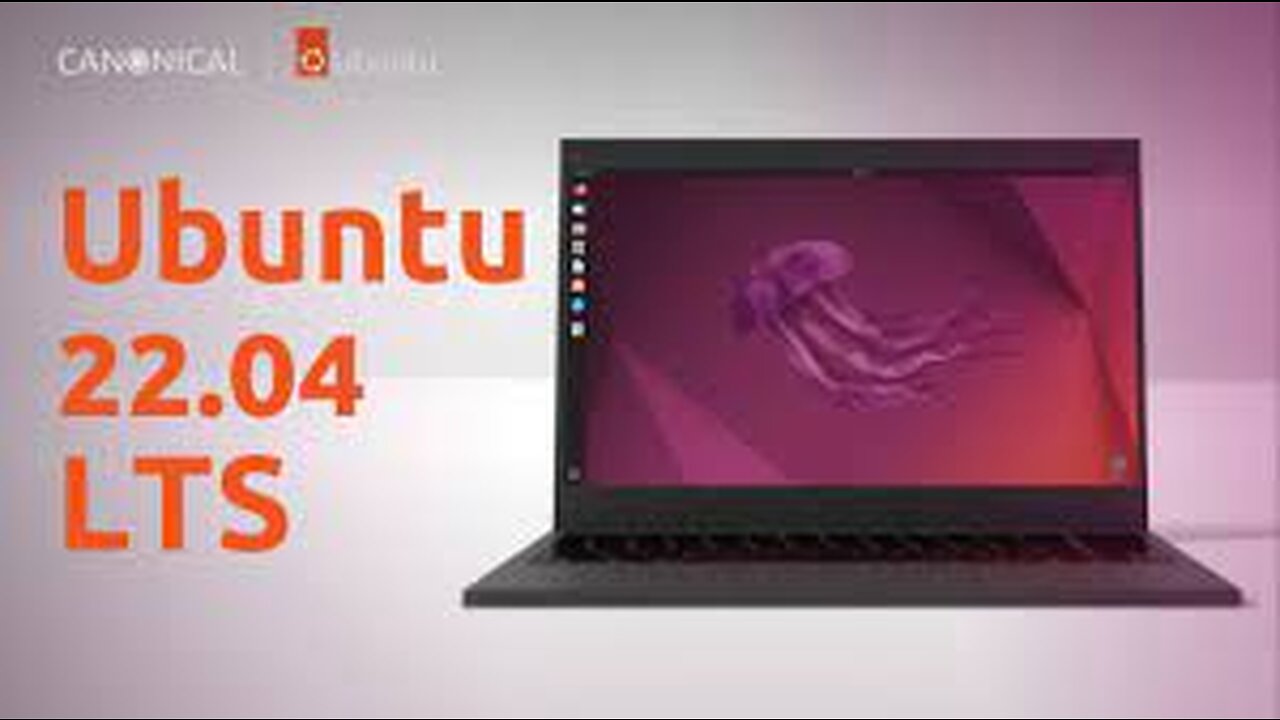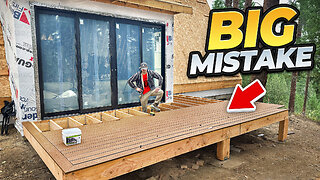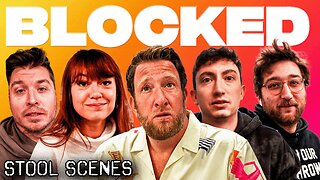Premium Only Content

How to install in ubuntu 2023
How to Install Ubuntu on Desktop (Laptop or PC)
Choosing which Linux distribution to install can seem challenging as there are many versions to choose from, and each of them offers very different features. One popular distribution to consider is Ubuntu.
It is arguably one of the best Linux distributions available. It is simple to use, easily customizable, and scalable based on users’ needs.
This article will go over the two methods of installing Ubuntu with GUI on your PC or laptop. We will also include the requirements and all the needed configuration settings for installing Ubuntu.
Requirements for Installing Ubuntu on Desktop
How to Install Ubuntu Wiping Out the Old Operating System
1. Download Ubuntu OS From the Official Directory
2. Create a Bootable USB
3. Install Ubuntu OS From the USB
How to Install Ubuntu on Windows Using VirtualBox
1. Download and Install VirtualBox
2. Download and Install Linux ISO
How to Proceed With Ubuntu Installer
Requirements for Installing Ubuntu on Desktop
To install Ubuntu on a desktop, your computer has to meet these requirements:
2 GHz dual-core processor or better
At least 4 GB of RAM
25 GB of free disk space
USB port and a USB stick with at least 4GB capacity
Keep in mind that these installation methods work only with desktop computers and won’t suit VPS users as we are installing Ubuntu with a graphical interface. If you prefer a command-line interface, consider opting for a VPS solution instead.
How to Install Ubuntu Wiping Out the Old Operating System
Wiping out all the data from the hard drive is the cleanest way to install Ubuntu Desktop. This way, users delete old operating system files and install a fresh Ubuntu version.
Check out the comparison table below for the differences between applying this method and the virtual machine.
Ubuntu Linux on VM Ubuntu Linux on physical hardware
Scalability Can run multiple Ubuntu installations simultaneously Can run one Ubuntu installation
Support Hardware needs to support virtualization for VM to work properly Ubuntu will work on a broader range of hardware
Performance Performance is usually much slower and dictated by the host system Performance is typically much better because the operating system runs directly on the physical hardware
Development VMs allows the deployment of testing environments based on the user’s needs. This is extra useful for software development and testing Reconfiguring the operating system is a long and tedious task. Usually, it will include complete reinstallation of the operating system
To summarize, the VM Ubuntu installation will suit Ubuntu software testers better. In comparison, casual users will benefit more from installing Ubuntu on physical hardware due to its maximum performance and stability.
1. Download Ubuntu OS From the Official Directory
The first step to install Ubuntu natively is to download the official Ubuntu OS ISO file. For this tutorial, we will go with the newest Ubuntu 22.04 LTS desktop version.
Official download page for desktop Linux distribution – Ubuntu 22.04 LTS. Red border indicating the download button
Users can also choose between Ubuntu Server and other Ubuntu flavors. However, the main Ubuntu Desktop version has all the essential features a beginner needs.
2. Create a Bootable USB
After downloading the ISO file, you will need to create a bootable USB drive, which will be used to install Ubuntu. To do so, you will have to use third-party software, such as Rufus. We recommend downloading the portable version as it won’t require any installation and will be ready to use right away.
Official download page for Rufus 3.18 Portable. It is used to mount ISO files to USB devices
Just open the executable file, and Rufus will start. Once done, ensure that the USB drive is plugged in and select the Ubuntu ISO file.
Important! For the partition scheme, select GPT if you are using a newer computer. Otherwise, go with MBR.
Drive Properties section on the Rufus program
As for Format Options, leave the default file system and cluster size values and click on START.
Format Options section on the Rufus program
Important! Creating a bootable USB stick will wipe out all the data from the USB drive. Make sure to back it up before proceeding.
Give it around ten minutes, and the bootable USB drive will be ready.
3. Install Ubuntu OS From the USB
With the Ubuntu bootable drive ready, proceed with the installation. For that, restart your computer and access BIOS. Usually, BIOS can be reached by pressing the DEL or F2 keys on the keyboard whenever a similar screen shows up:
Default bios boot up screen for ASUS motherboard
Pro Tip
In case you missed the BIOS screen, restart your computer and try again.
Once in BIOS, look for the boot menu and set the order to make the USB drive the first one on the list. It should look like this:
Boot Priority settings for MSI BIOS
Now save and close BIOS. Give it a few minutes, and the Ubuntu installer should start. Once it begins, proceed to the next section about the Ubuntu installer.
How to Install Ubuntu on Windows Using VirtualBox
If you don’t want to wipe your hard drive completely, go with the VirtualBox installation method. This will install Ubuntu inside a virtual machine, making it completely independent of the primary system.
This method is excellent for those who want to test out different Linux distributions or install third-party software packages for Ubuntu.
Pro Tip
The virtual machine installation method allows you to install Ubuntu alongside other operating systems on the same computer.
1. Download and Install VirtualBox
Start by downloading the newest version of Oracle VirtualBox. Once done, open the executable file and proceed with the installation.
VirtualBox installation process
When asked about network interfaces, select Yes. Note that the internet connection might go down for a few minutes during the installation.
VirtualBox installer network interfaces warning
Next, proceed with the default installation settings.
2. Download and Install Linux ISO
After installing VirtualBox, open it by using the desktop shortcut and select New to create a new virtual machine.
Main VirtualBox window. The red border indicates the button to create a new virtual machine
Specify the virtual machine name and select the amount of RAM to be assigned. We recommend giving half the amount of the main system. For example, if the computer has 8 GB of RAM, assign 4 GB to the virtual machine.
There is also an option to specify a virtual hard disk since it’s a fresh installation – go with the default settings and click on Create.
VirtualBox window to specify the virtual machine name and memory size
Next up, choose the file location for the virtual machine, specify file size and click on Create. We will be keeping the default hard disk file type and dynamically allocated storage. Dynamic storage saves a lot of space because it grows as the data inside the virtual disk increases. On the other hand, fixed storage takes up the full amount right from the start.
VirtualBox window to specify hard drive size, type and storage
The virtual machine is now created. However, it will show an error message about no boot device. To fix it, select Settings, as you will need to assign the Ubuntu ISO file downloaded earlier.
Main VirtualBox window. The red border indicates the button to open the settings menu
Once in the settings, open the Storage section and assign the ISO file to the Controller: IDE.
VirtualBox window showing how to mount ISO file to DVD drive
The end result will look like this:
VirtualBox storage settings
Now, you can start the virtual machine without any issues.
Main VirtualBox window. The red border indicates the button to open the settings menu
Give it a few minutes, and the Ubuntu installer should start. Then, proceed to the next section about the Ubuntu installer.
How to Proceed With Ubuntu Installer
When the system boots to the new Ubuntu installation screen, select the Try or Install Ubuntu option.
The first step in the Ubuntu installation process. Try or Install Ubuntu button is selected
Select the installer language and choose the Install Ubuntu option in the next step. There is also an option to test Ubuntu. In that case, none of the hard drive files would get wiped. However, we are proceeding with the full installation.
Ubuntu installer step to choose the main language. The red border indicates the button to install Ubuntu
Choose the preferred keyboard layout and continue.
Ubuntu keyboard layout settings
Now you can choose between the Normal and Minimal installations. We recommend sticking with the Normal installation since it offers more helpful utilities and software packages. Additionally, select the option to download updates to get the latest possible version.
Ubuntu installer step to select update settings and specify if an user wants normal or minimal installation
For the Installation type, choose Erase disk and install Ubuntu.
Ubuntu installer step to select the installation type
When asked about partition, click on Continue.
Ubuntu installer step warning user about the root partition that will be created
Next up, select the timezone.
Ubuntu installer step allowing user to select their timezone
Lastly, fill in the name, username, and password.
Ubuntu installer step to specify new operating system user
After clicking continue, Ubuntu installation will start. Give it about 20 minutes and restart the computer after installation is done. Once the computer boots up, you should see the default welcome screen.
Ubuntu default desktop screen
Congratulations – you have successfully installed Ubuntu 22.04 on your computer.
Conclusion
Due to its simplicity and versatility, Ubuntu is often the go-to choice for an operating system. Although, not all Linux beginners might know how to install it.
In this tutorial, we’ve covered the main points of Ubuntu installation:
Requirements to install Ubuntu Linux on a desktop computer.
How to make a bootable Ubuntu 22.04 LTS USB device with Rufus.
How to install Ubuntu on a physical Windows machine by wiping out the old operating system.
How to install Ubuntu on a virtual machine by using Oracle VirtualBox software.
-
 42:24
42:24
MYLUNCHBREAK CHANNEL PAGE
21 hours agoA Century Gone
137K64 -
 38:22
38:22
Stephen Gardner
14 hours ago🔥HOLD ON! The RUMORS about Kamala are TRUE...
179K496 -
 1:22:44
1:22:44
Michael Franzese
1 day agoWill Trump’s Win Finally Convince Democrats to Stop The Woke Nonsense??
166K129 -
 8:27:07
8:27:07
MDGgamin
18 hours ago🔴LIVE- Rumble Gaming To The MOON - Variety of Games & Chatting - #RumbleTakeover
146K5 -
 27:24
27:24
Mr. Build It
5 days agoDECK DISASTER! How We Fixed a Botched Build
112K16 -
 26:58
26:58
barstoolsports
18 hours agoZach Bryan Blocks All of Barstool | Stool Scenes
123K17 -
 1:06:44
1:06:44
Talk Nerdy 2 Us
1 day ago🔥 Hackers vs. The World: From Amazon breaches to FBI-confirmed Chinese telecom spying
113K22 -
 1:24:20
1:24:20
Vigilant News Network
1 day agoJoe Rogan Drops Shocking Election Claim | The Daily Dose
175K188 -
 1:10:18
1:10:18
FamilyFriendlyGaming
1 day ago $19.43 earnedCat Quest III Episode 2
142K -
 20:07
20:07
DeVory Darkins
1 day ago $24.37 earned"They Talking About Finance!" The View FRUSTRATED by NYC Mayor TRUTH BOMB
106K123